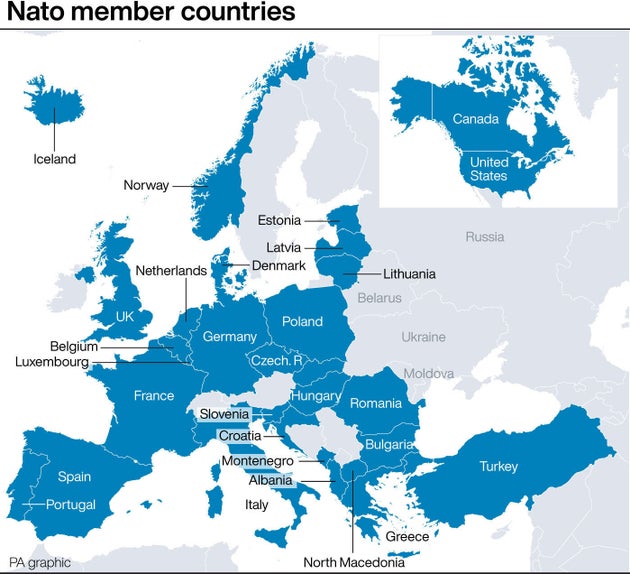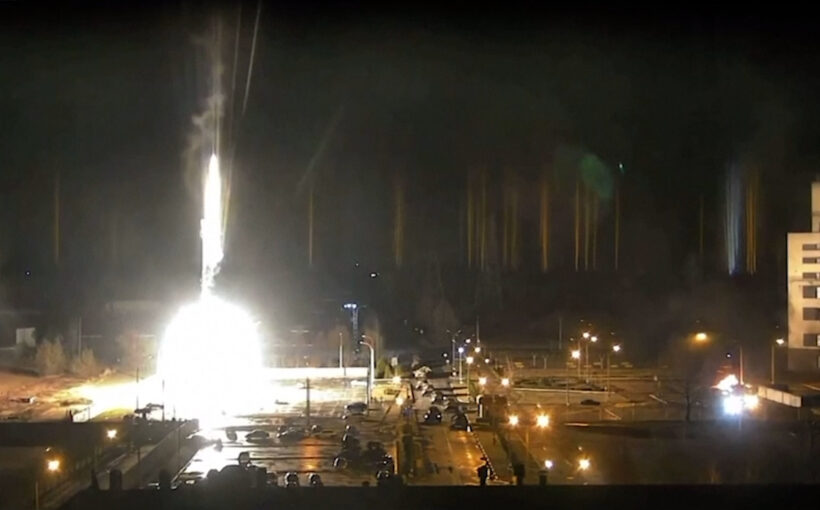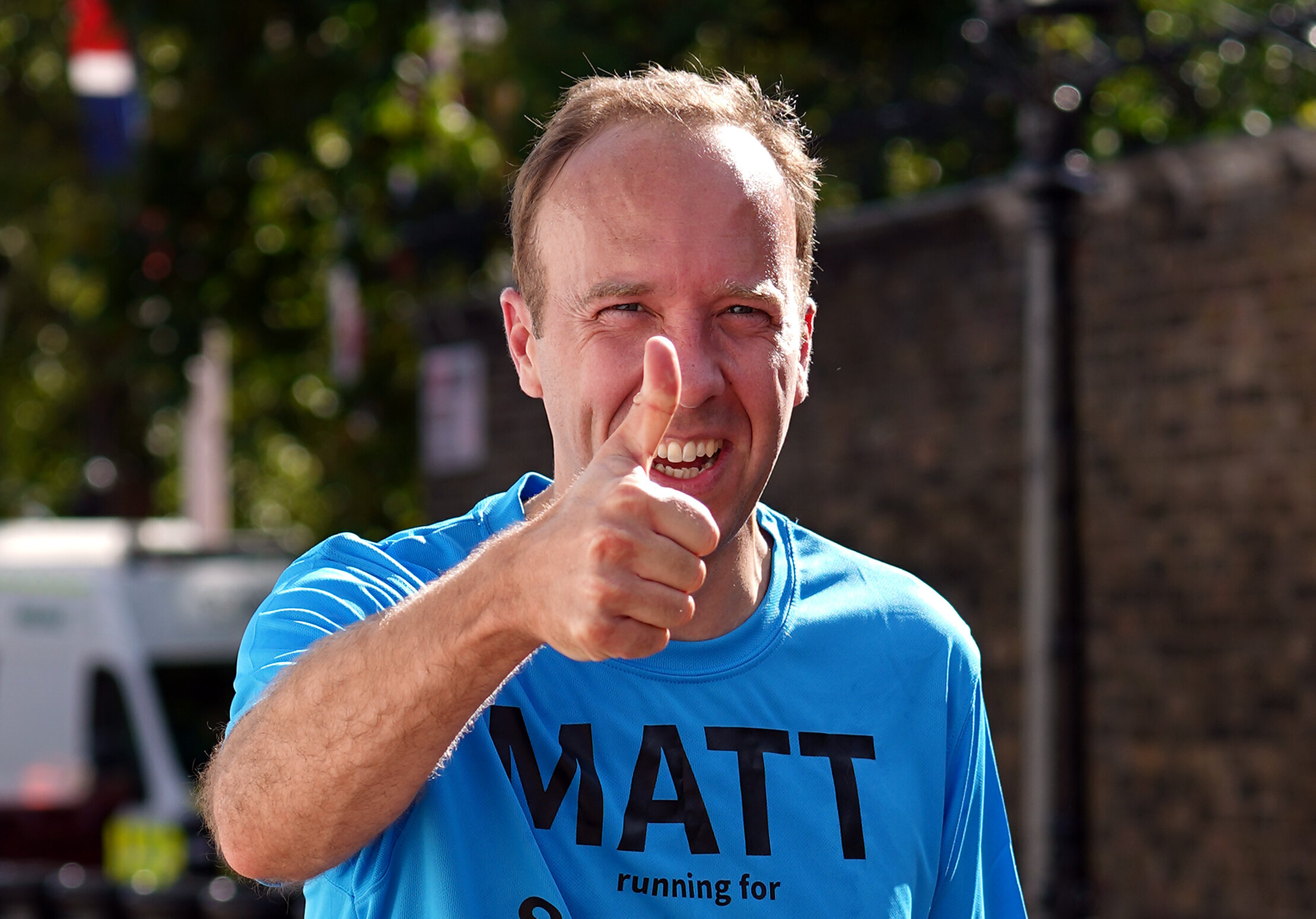As Russia stepped up its bombardment of the Ukraine capital Kyiv on Tuesday, smashing apartments and a subway station, another round of diplomacy took place.
With the number of people driven from Ukraine by the war now eclipsing three million, peace talks between Russia and Ukraine resumed. While there was no breakthrough, comments from Ukraine president Volodymyr Zelenskyy about future security arrangements generally – and membership of Nato specifically – may be considered the first steps towards a ceasefire.
Here’s what we know so far.
What’s happening?
On Monday, March 14, Russia and Ukraine started a fourth round of talks via video link as fighting between the two sides continued almost three weeks after Vladamir Putin’s invasion. They were “paused” until Tuesday.
The previous three rounds of in-person talks have taken place in Belarus. The first talks, on February 28, four days after the Russian invasion, ended without resolution. None of the others have produced any lasting agreements.
The end of fighting is the ultimate goal, but even establishing humanitarian routes to provide safe passage for civilians out of the warzone have proved problematic.
Could this round be different?
Ahead of the fourth round of talks, the two sides had expressed some optimism.
Ukrainian presidential advisor Mykhailo Podolyak, a member of its delegation, said: “We will not concede in principle on any positions. Russia now understands this. Russia is already beginning to talk constructively.
“I think that we will achieve some results literally in a matter of days.
RIA news agency quoted a Russian delegate, Leonid Slutsky, as saying the talks had made substantial progress.
“According to my personal expectations, this progress may grow in the coming days into a joint position of both delegations, into documents for signing,” Slutsky said.
Neither side indicated what the scope of any agreement might be.
What is Russia asking for?
No-one fully understands what Putin’s plans truly are, though his description in 2005 of the collapse of the Soviet Union as “the greatest geopolitical catastrophe of the century” points to his desire to re-establish something akin to the old USSR.
Strictly in terms of demands from the talks, Russia wants legal assurances that Ukraine will never join the military alliance called the North Atlantic Treaty Organisation – or Nato – and its 30 member nations. They want Ukraine to take a so-called neutral status and change its constitution to guarantee this.
The Kremlin has also demanded that Ukraine acknowledges Crimea, which Putin annexed in 2014, as Russian territory. It also wants recognition of the independence of pro-Russian separatists in Donetsk and Luhansk in Ukraine’s eastern industrial heartland of Donbas. The conflict in the region, which has claimed at least 14,000 lives, was Russia’s fabricated pretext to invade Ukraine last month.
Kremlin spokesperson Dmitry Peskov said last week that the war will stop “in a moment” if Ukraine agrees to these demands.
What is Ukraine asking for?
The Ukrainian delegation is seeking a ceasefire and a troop withdrawal. Ukraine has said it is willing to negotiate, but not to surrender or accept any ultimatums. Its delegates have given no signal they are willing to compromise on its territories.
Ukrainian presidential advisor Mykhailo Podolyak, a member of the delegation, said on Monday in a video statement on Twitter: “Our positions remain unchanged: peace, immediate ceasefire, withdrawal of all Russian troops.”
Ukraine will be ready to talk about any neighbourly relations and political settlements with Russia only after the implementation of these positions, Podolyak said.
Is Nato the key?
Since 2019, joining Nato has been enshrined in the Ukrainian constitution. Ukraine becoming part of the alliance would represent the latest member of the former Soviet bloc to join, after enlargement in the 1990s and 2000s brought in Estonia, Latvia and Lithuania.
The growth of Nato – where each member agrees to mutual defence in response to an enemy attack – has been Putin’s biggest publicly-stated grievance with the US and its allies during the build-up up to war.

Last week, reports suggested Ukraine had “cooled” on the long-term objective of membership. And on Tuesday, Zelenskyy, who publicly supported Nato membership before Russia invaded, said Ukraine was prepared to accept security guarantees that stop short of joining Nato.
During a video call with military officials today, he is quoted as saying: “Ukraine is not a member of Nato. We understand that. We have heard for years that the doors were open, but we also heard that we could not join. It’s a truth and it must be recognised.”
Where next?
Analysts have suggested that Russia will push for total victory in the war – as has been witnessed by its flattening of Ukraine cities in a manner similar to the Chechen capital Grozny – unless Putin can come away with territory and a compromise on Nato.
But his hand may be forced. Russia has become geopolitically, financially and commercially isolated as a result of sanctions from across the world and businesses and brands pulling out of the country, and the full consequences are yet to fully materialise.
Some have suggested it may take international intervention to break the deadlock, particularly from countries not aligned with the West. China has been urged to mediate as Turkey’s foreign minister was being sent to Moscow and Kyiv in the coming days as part of efforts to secure a ceasefire.
Source: Huff Post






